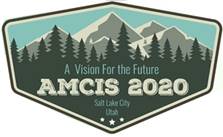Loading...
Abstract
Mobile payment is becoming more and more popular recently. Transportation service in mobile payment applications is regarded as an important way to realize a natural evolution of electronic payment that enables feasible and convenient mobile commerce transactions. As more people are using or begin to use mobile payment, the competition among mobile payment applications based on payment platforms is a typical “winners-take-all.” As such, understanding how mobile payment influences the society, industries, and users’ behaviors is critical for both academics and practitioners. This study addresses two research questions: (1) What are the factors that influence users’ switching behaviors in choosing transportation services in mobile payment application? (2) How do these factors influence users’ switching behavior? This research uses the Push–Pull–Mooring (PPM) framework as the basic framework to investigate the switching behavior. Based on an extensive literature review, accessibility concern and the monetary rewards of alternatives are identified as Push and Pull factors, respectively, whereas inertia and privacy awareness are identified as Mooring factors. A research model has been developed. This research can advance the understanding of formation of switching behavior within the context of transportation services in mobile payment applications and also enrich the PPM framework by identifying specific contextual factors such as privacy awareness and perceived accessibility of transportation services in mobile payment applications. Our study can help companies identify the advantages and disadvantages in keeping existing users and attracting new users.
Recommended Citation
Zhang, Qiunan and Zhang, Xihui, "Switching Behaviors of Transportation Services in Mobile Payment Applications" (2020). AMCIS 2020 TREOs. 54.
https://aisel.aisnet.org/treos_amcis2020/54
Abstract Only
When commenting on articles, please be friendly, welcoming, respectful and abide by the AIS eLibrary Discussion Thread Code of Conduct posted here.


